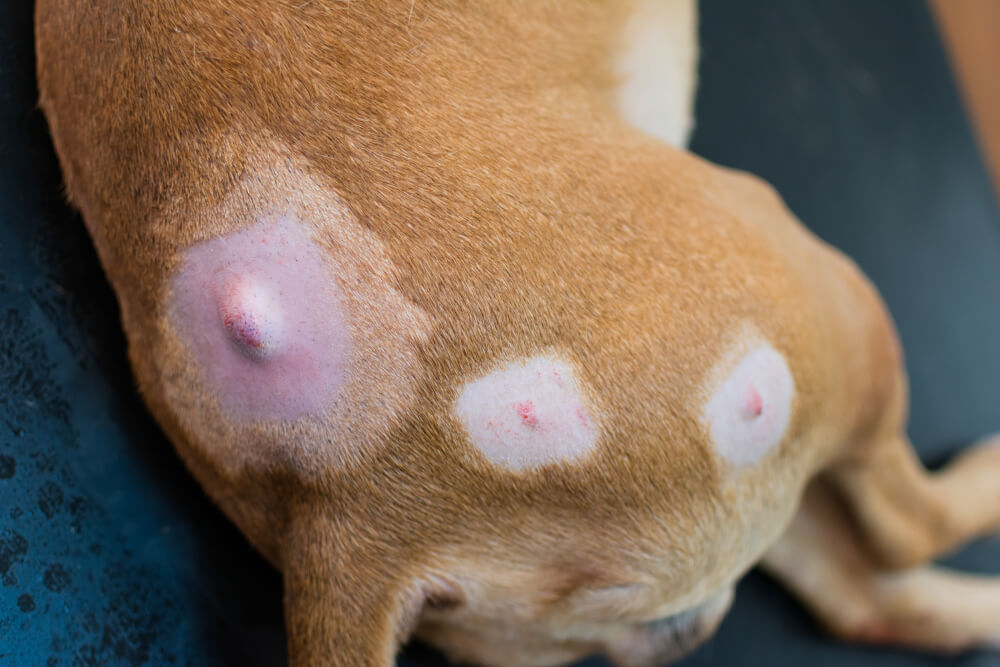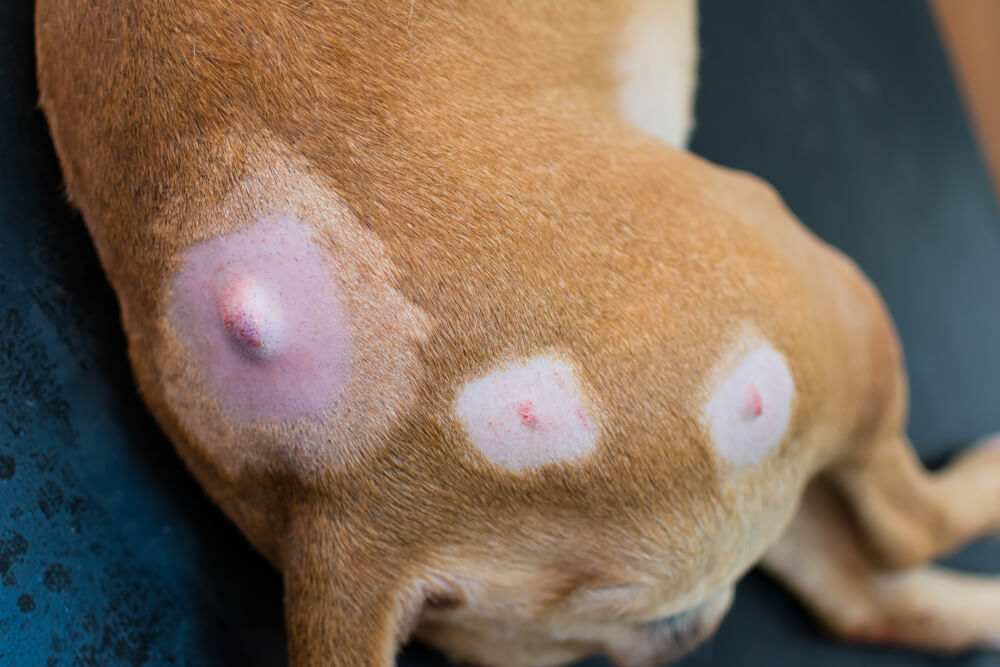Dogs are prone to various skin conditions, and one of the most common is pyoderma. This bacterial skin infection can cause discomfort for your furry friend, but with proper care and treatment, they’ll be back to their playful self in no time. In this guide, we’ll explore everything you need to know about pyoderma in dogs, from its causes and symptoms to treatment and prevention tips.

What Is Pyoderma?
Pyoderma, which means “pus in the skin,” is a bacterial infection that affects the skin’s outer layers. It can occur anywhere on a dog’s body but is often found in areas prone to moisture, friction, or injury. While pyoderma is usually not life-threatening, it can make your dog uncomfortable and may indicate an underlying health issue.
Types of Pyoderma in Dogs
Pyoderma can vary in severity and location. Here are the common types:
Surface Pyoderma
- Affects only the outermost skin layer.
- Often seen in skin folds, such as on the face or tail, particularly in wrinkled breeds like Bulldogs.
Superficial Pyoderma
- Involves the hair follicles and surrounding skin.
- Commonly caused by scratching or minor injuries.
Deep Pyoderma
- Affects deeper layers of the skin and hair follicles.
- Often results from untreated or recurring infections.
What Causes Pyoderma in Dogs?
Several factors can contribute to pyoderma, including:
Bacterial Infection
- Most cases are caused by Staphylococcus pseudintermedius, a bacteria commonly found on dogs.
- These bacteria multiply when the skin’s natural defenses are weakened.
Underlying Conditions
- Allergies (food, environmental, or flea allergies).
- Hormonal imbalances, such as hypothyroidism or Cushing’s disease.
- Autoimmune disorders.
Skin Trauma or Irritation
- Cuts, scratches, or insect bites.
- Excessive moisture, especially in skin folds or after swimming.
Poor Hygiene
- Dirt or debris trapped in the fur can irritate the skin.
- Lack of grooming may exacerbate the condition.
Symptoms of Pyoderma in Dogs
Recognizing the signs of pyoderma early can help ensure prompt treatment. Watch out for:
Physical Signs
- Redness and inflammation.
- Pustules (small, pus-filled bumps).
- Scabs or crusted areas on the skin.
- Hair loss around affected areas.
- Thickened or darkened skin in chronic cases.
Behavioral Signs
- Frequent scratching, licking, or chewing at the affected area.
- Restlessness or discomfort, especially if the infection is severe.

How Is Pyoderma Diagnosed?
If you suspect pyoderma, a visit to the vet is essential. The diagnostic process may include:
- Physical examination: Your vet will assess the affected area and take note of symptoms.
- Skin cytology: A sample is taken from the infected area to identify the bacteria.
- Allergy testing: To rule out underlying allergies.
- Blood tests: To check for hormonal imbalances or systemic conditions.
Treating Pyoderma in Dogs
The good news is that pyoderma is treatable. The approach depends on the severity and underlying cause.
Topical Treatments
- Antibacterial shampoos: Medicated shampoos containing chlorhexidine or benzoyl peroxide help cleanse the skin and kill bacteria.
- Ointments or sprays: Applied directly to the infected area for localized treatment.
Oral Antibiotics
- Prescribed for more severe or widespread infections.
- It’s crucial to complete the full course as directed to prevent antibiotic resistance.
Addressing the Underlying Cause
- Allergy management with hypoallergenic diets or medications.
- Hormonal therapies if conditions like hypothyroidism are diagnosed.
Lifestyle Adjustments
- Regular grooming to keep the skin clean and free of irritants.
- Managing weight to reduce skin folds and moisture retention.
Preventing Pyoderma in Dogs
While pyoderma isn’t always avoidable, these steps can help reduce the risk:
Maintain Proper Hygiene
- Bathe your dog regularly using vet-recommended shampoos.
- Dry their coat thoroughly after swimming or baths, paying extra attention to skin folds.
Groom Regularly
- Brush your dog’s coat to remove dirt and debris.
- Trim fur in areas prone to moisture or friction.
Monitor Skin Health
- Check your dog’s skin for signs of irritation, redness, or bumps, especially if they scratch frequently.
- Address minor injuries promptly to prevent infection.
Control Allergies and Parasites
- Use flea preventatives to avoid flea-related allergies.
- Work with your vet to manage food or environmental allergies.
When to See a Vet
Seek veterinary attention if:
- Your dog shows signs of discomfort, such as excessive scratching or licking.
- The infection doesn’t improve after a few days of home care.
- The affected area worsens or spreads.
Prompt treatment can prevent the infection from becoming more severe or recurring.
Final Thoughts
Pyoderma in dogs might be common, but it doesn’t have to disrupt your pup’s happiness for long. With proper care and treatment, your dog can recover quickly and stay comfortable. Regular grooming, good hygiene, and keeping an eye on their overall health are the best ways to prevent future infections.
Remember, when it comes to your dog’s health, you’re never alone—your vet is your best partner in keeping your furry friend healthy and thriving.
For more insights into dog care and health tips, visit DogTalkBoy, your go-to source for all things canine!








